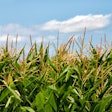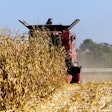
The latest U.S. Drought Monitor report, jointly produced by the National Drought Mitigation Center at the University of Nebraska-Lincoln, the United States Department of Agriculture, and the National Oceanic and Atmospheric Administration, reveals a complex picture for American agriculture, with some regions seeing improvements while others face worsening drought conditions.
In the Southwest, the situation has become particularly dire for farmers and ranchers. New Mexico saw widespread deterioration, with a larger area of extreme drought (D3) expanding along the southern tier of the state and a small area of exceptional drought (D4) introduced in the southwestern interior. This intensification poses significant challenges for agricultural operations, potentially leading to reduced crop yields, increased irrigation costs, and stressed livestock conditions.
The central and western parts of Texas and Oklahoma are also grappling with expanding dryness and drought. Since mid-December, less than 5 percent of normal precipitation has fallen on the Big Bend area of Texas, while large sections of central, southern, and western Texas reported less than half of normal rainfall since mid-January. This persistent dryness is raising concerns for winter wheat development and spring planting preparations in these key agricultural states.
However, there is some positive news for farmers in parts of the Midwest. Moderate to heavy precipitation brought sizeable areas of improvement to northwestern Indiana, central and northern Illinois, central and southern Iowa, and much of Missouri. This moisture could benefit corn and soybean producers in these areas as they prepare for the upcoming planting season.
The High Plains region presents a mixed picture for agriculture. Light to moderate precipitation reduced dryness and drought severity in parts of Wyoming, northern Colorado, north-central Nebraska, and a small area in northwestern Kansas. However, continued subnormal precipitation induced a broad area of deterioration in central and western Kansas and smaller portions of southern Colorado. This situation is particularly concerning for winter wheat growers in these areas.
In the West, areas of moderate precipitation benefited the Sierra Nevada and parts of the Pacific Northwest, which could improve irrigation water supplies for the upcoming growing season. However, most of the large West Region recorded minimal precipitation, maintaining drought conditions that continue to challenge farmers and ranchers across the region.
Looking ahead, the Climate Prediction Center's 6-10 day outlook favors below-normal precipitation across most of Texas and Oklahoma, which could further stress agricultural operations in those states. However, near- or wetter-than-normal conditions are expected for much of the rest of the country, with the best odds for surplus precipitation over and near the Pacific Northwest.
As farmers and ranchers navigate these shifting drought patterns, adaptive strategies in water management and crop selection will be crucial. The varied conditions across the country underscore the complex challenges facing U.S. agriculture in an era of changing climate patterns, highlighting the importance of continued monitoring and responsive agricultural practices.

















